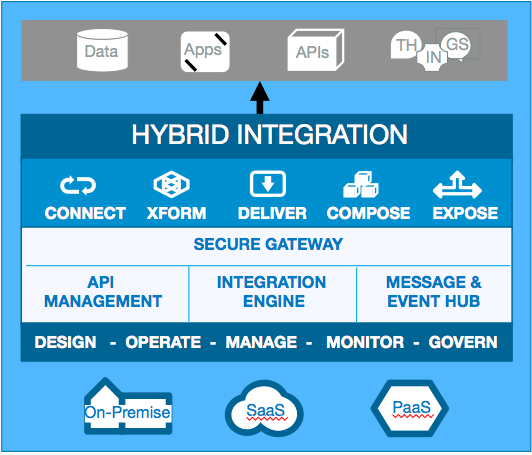How to ensure your integration landscape keeps pace with digital transformation
Today, the ownership boundary of an enterprise spreads well beyond its walls, encompassing IT assets across a truly hybrid environment. In this architecture, existing applications are moved to the infrastructure as a service (IaaS) of cloud providers. New applications are often built on the cloud as a platform as a service (PaaS). In line with this trend, a surge is also taking place in the use of pre-built cloud-based software as a service (SaaS).
In addition, interaction with external parties, whether customers or business partners, is increasingly automated. The degree of automation with those external parties is often a business differentiator.
As such, any integration capability must fundamentally address connectivity across cloud boundaries. This capability must also simplify the security and management issues that it brings and embrace the standards that are evolving within hybrid architectures.
Hybrid integration is often simplistically defined as the ability to integrate on-premises systems with cloud systems. The reality for most organizations has much broader dimensions. A true hybrid integration architecture considers integration between all the owned environments, spanning on-premises and cloud environments, and whether that cloud is local, dedicated, or public. It also spans from a self-built environment to platforms to SaaS. It also must factor how the enterprise connects with its partners and customers. Hybrid integration has a vast scope. The key challenge is how to interpret that complexity and find common architectural patterns within it to help simplify the problem.
Hybrid integration core capabilities
At a high level, hybrid integration is a broad integration framework. It seamlessly bridges all owned environments, whether direct data sources, applications, or APIs, and can connect to them wherever they might be: on-premises, IaaS, PaaS, or SaaS.
Hybrid integration must contain broad connectivity capabilities for modern cloud-based applications and to equally critical, but older systems of record (SOR). It must have tools to simplify and accelerate productivity, such as flexible and fast mapping and transformation. From a non-functional perspective, it must also provide enterprise-grade and Internet-grade scalability, security, and resilience.
However, although it is important to define hybrid integration as a whole, we must consider how integration needs are changing and recognize the two different audiences that are involved.
For Details check below
https://developer.ibm.com/technologies/paas/articles/mw-1606-clark-trs/

